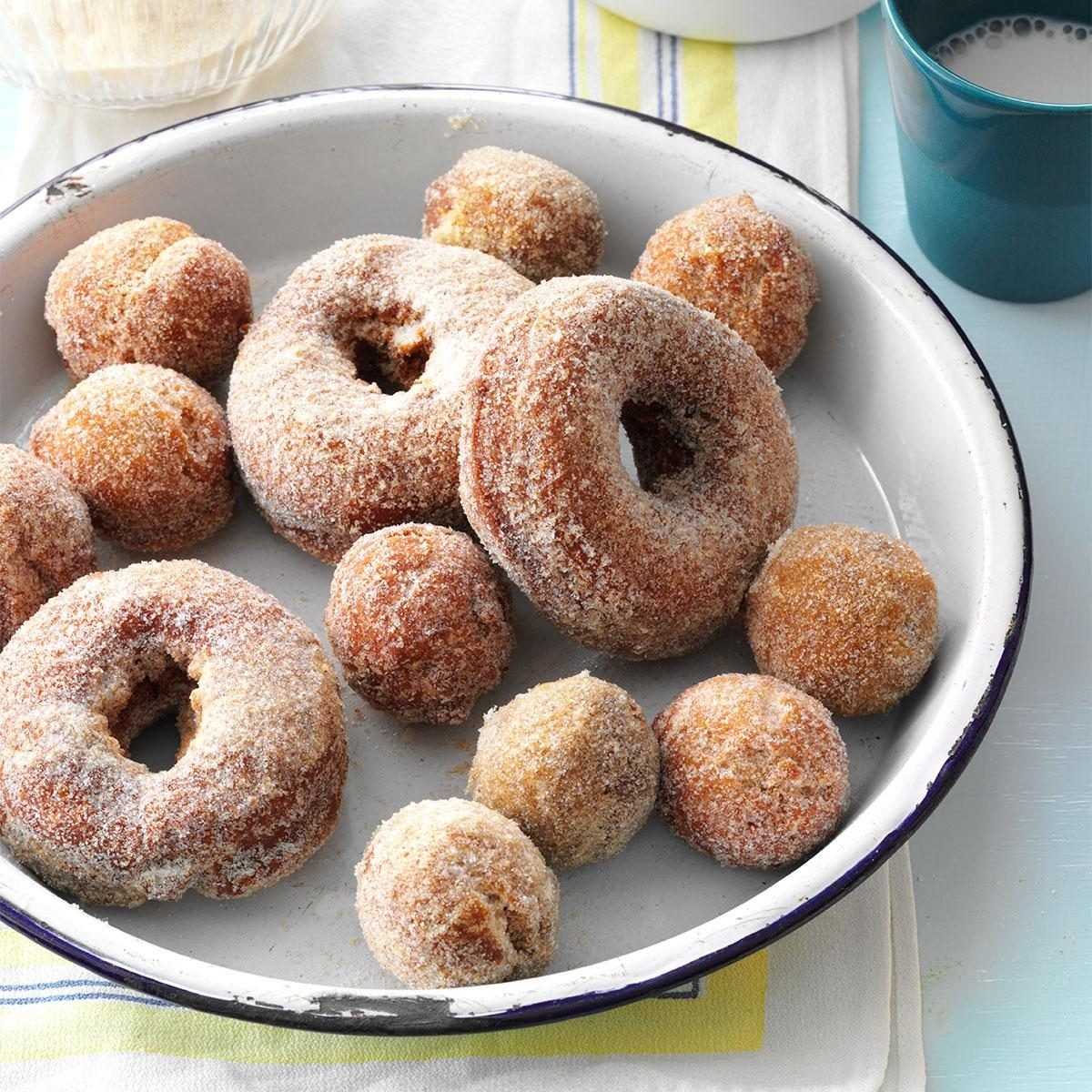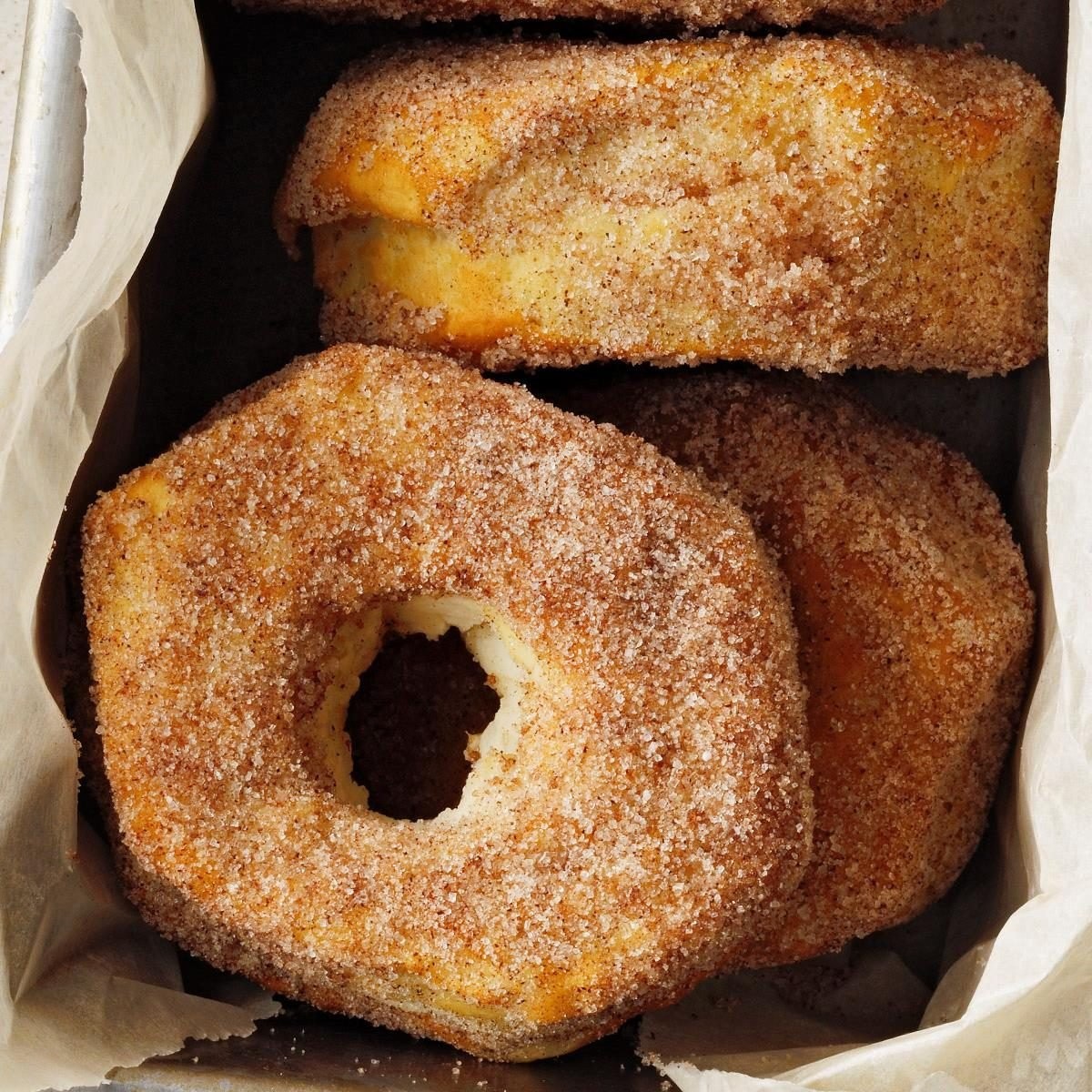Why is baker’s dozen 13 and not the traditional 12? At WHY.EDU.VN, we unravel the fascinating history and practical reasons behind this unique counting convention, while offering comprehensive explanations and expert insights. Explore the origins of this term and discover why bakers often include an extra item in their dozens, ensuring customer satisfaction and regulatory compliance, as well as baker’s tradition.
1. Unveiling the Mystery: What is a Baker’s Dozen?
A baker’s dozen is a set of 13 items, most commonly baked goods like bread, rolls, or doughnuts, instead of the usual 12. This practice, steeped in history, offers a glimpse into the world of medieval baking regulations and the ingenuity of bakers striving to avoid penalties. So, what is the reason for a baker’s dozen? The answer lies in a combination of legal requirements and customer service.
1.1. The Basic Definition: Beyond the Standard Dozen
While a standard dozen consists of twelve items, a baker’s dozen uniquely includes thirteen. This seemingly simple addition carries a significant historical weight. This tradition isn’t just about generosity; it’s rooted in the need for precision and protection against accusations of underselling. For bakers, understanding why is baker’s dozen 13 is crucial for maintaining tradition and meeting customer expectations.
1.2. Practical Examples: Where You Might Encounter It
You’re most likely to encounter a baker’s dozen when purchasing baked goods from a bakery. Whether you’re ordering bagels, cookies, or dinner rolls, asking for a baker’s dozen will typically get you 13 items. This is a nod to the historical practice and a way for bakeries to offer a little extra to their customers.
2. A Journey Through Time: The History Behind the Baker’s Dozen
The term “baker’s dozen” isn’t a modern invention. It dates back to medieval England, with roots in the 13th century. The history of baker’s dozen is intertwined with strict laws and the potential for severe punishment, offering a captivating look into the lives of bakers from centuries past.
2.1. Medieval England: The Birthplace of the Baker’s Dozen
During the 13th century in England, bakers faced strict regulations regarding the weight and size of their bread loaves. King Henry III, concerned about bakers shortchanging customers, enacted laws to ensure fair trade. Bakers who sold underweight loaves risked fines, imprisonment, or even public shaming.
2.2. The Assize of Bread and Ale: Laws That Shaped Baking Practices
The Assize of Bread and Ale was a statute that regulated the price and quality of bread and ale. This law aimed to protect consumers from being overcharged or sold substandard goods. Bakers were required to adhere to specific weight standards, and any discrepancies could lead to severe penalties.
2.3. Avoiding Penalties: The Baker’s Solution
To avoid the risk of accidentally selling underweight loaves and facing legal repercussions, bakers began including an extra loaf in each dozen. This “insurance loaf” ensured that even if some loaves were slightly smaller than required, the total weight would still meet or exceed the legal standard. Thus, the baker’s dozen was born.
3. The Legal Angle: Why Bakers Took the Extra Step
The legal environment in medieval England was a primary driver behind the creation of the baker’s dozen. The fear of punishment, combined with the difficulty of ensuring consistent loaf weights, led bakers to adopt this unique practice. Understanding the legal context is key to grasping why is baker’s dozen 13.
3.1. The Risk of Underweight Loaves: Consequences for Bakers
Selling underweight loaves was a serious offense. Bakers found guilty of this practice could face fines, imprisonment, or even corporal punishment. The severity of these penalties made bakers cautious and motivated them to find a way to protect themselves.
3.2. The “Insurance Loaf”: Minimizing the Margin of Error
The extra loaf in a baker’s dozen served as an “insurance loaf,” providing a buffer against potential errors in weight. This additional loaf reduced the risk of accidentally falling below the legal weight requirement and incurring penalties. It was a practical solution to a challenging problem.
3.3. Fair Trade Practices: Protecting Consumers
While the primary motivation for the baker’s dozen was to protect bakers, it also contributed to fair trade practices. By including an extra loaf, bakers ensured that customers received at least the expected amount of bread, and often a little more. This helped maintain customer satisfaction and trust.
4. Beyond the Law: Other Theories and Explanations
While the legal explanation is the most widely accepted, other theories attempt to explain the origin of the baker’s dozen. These alternative explanations offer additional perspectives on why is baker’s dozen 13, highlighting cultural and practical considerations.
4.1. Guild Regulations: Maintaining Standards Within the Baking Community
Some historians suggest that guild regulations may have played a role in the development of the baker’s dozen. Guilds, which were associations of craftsmen and merchants, often set standards for their members to ensure quality and fair practices. It’s possible that baking guilds encouraged or required members to include an extra loaf as a way to maintain their reputation.
4.2. Superstition and Tradition: The Power of Numbers
Superstition may have also contributed to the tradition of the baker’s dozen. In some cultures, the number 13 is considered unlucky, and adding an extra item could have been seen as a way to ward off bad luck or ensure a successful batch of baked goods.
4.3. Generosity and Customer Service: Building Loyalty
Another theory is that bakers simply wanted to be generous to their customers. By giving an extra loaf, they could build goodwill and encourage repeat business. This act of generosity could have evolved into a standard practice over time.
5. Modern Interpretations: The Baker’s Dozen Today
Today, the strict laws and penalties that led to the creation of the baker’s dozen are long gone. However, the tradition persists in many bakeries, serving as a reminder of the history and ingenuity of bakers past. Understanding how the baker’s dozen is viewed today provides insight into why is baker’s dozen 13 still relevant.
5.1. A Marketing Tactic: Attracting Customers with Added Value
In the modern era, offering a baker’s dozen can be a savvy marketing tactic. Customers appreciate getting a little extra, and it can incentivize them to choose one bakery over another. This added value helps build customer loyalty and positive word-of-mouth.
5.2. A Symbol of Tradition: Honoring Baking History
The baker’s dozen is also a symbol of tradition, connecting contemporary bakers to their historical roots. By continuing this practice, bakeries honor the legacy of their predecessors and maintain a link to the past.
5.3. A Fun Fact: Impressing Friends with Baking Trivia
Knowing the history of the baker’s dozen is a fun fact that can impress friends and family. It’s a unique piece of trivia that highlights the fascinating intersection of history, law, and baking. Sharing this knowledge can spark interesting conversations and add a touch of historical context to your next bakery visit.
6. Baking at Home: How to Handle the Baker’s Dozen
While baker’s dozens are common in commercial bakeries, they can present a challenge for home bakers. Most recipes are designed for standard dozens, so adjusting for a baker’s dozen requires some creativity. Navigating this challenge is part of the fun for those who appreciate why is baker’s dozen 13.
6.1. Adjusting Recipes: Scaling Up for 13 Items
To make a baker’s dozen at home, you’ll need to adjust your recipes accordingly. This usually involves increasing the ingredients by about 8.3% (1/12th of the original amount). While this may require some math, it’s a straightforward process.
6.2. Muffin Tins and Baking Sheets: Overcoming Quantity Challenges
Muffin tins and baking sheets are typically designed to hold even numbers of items, such as 6, 12, or 24. To bake a baker’s dozen, you may need to use multiple tins or sheets, or get creative with how you arrange the items.
6.3. Sharing the Extra: Spreading the Baking Joy
One of the best ways to handle a baker’s dozen at home is to share the extra item with friends, family, or neighbors. This allows you to enjoy your baking while also spreading joy to others. It’s a win-win situation.
7. Cultural Significance: The Baker’s Dozen Around the World
While the baker’s dozen originated in England, it has spread to other parts of the world, often with its own unique cultural interpretations. Exploring the cultural significance of the baker’s dozen provides a broader understanding of why is baker’s dozen 13.
7.1. Variations in Practice: Regional Differences
In some regions, the baker’s dozen is a well-known and widely practiced tradition. In others, it may be less common or even unheard of. These regional differences reflect the diverse culinary and cultural landscapes around the world.
7.2. Linguistic Adaptations: Translations and Similar Concepts
The term “baker’s dozen” may not have a direct translation in all languages, but many cultures have similar concepts or expressions for giving a little extra. These linguistic adaptations highlight the universal appeal of generosity and fair trade.
7.3. The Baker’s Dozen in Literature and Media: Pop Culture References
The baker’s dozen has appeared in literature, movies, and other forms of media, often as a symbol of tradition, generosity, or a quirky historical fact. These pop culture references help keep the tradition alive and introduce it to new audiences.
8. Why Does It Matter? The Enduring Appeal of the Baker’s Dozen
The baker’s dozen is more than just a number; it’s a symbol of history, tradition, and generosity. Its enduring appeal lies in its ability to connect us to the past while also offering a little something extra in the present. Understanding why is baker’s dozen 13 helps appreciate its lasting significance.
8.1. A Reminder of History: Connecting to the Past
The baker’s dozen serves as a reminder of the strict laws and challenging conditions that bakers faced in medieval England. It’s a tangible link to the past, allowing us to appreciate the ingenuity and resilience of those who came before us.
8.2. A Symbol of Generosity: Giving a Little Extra
The extra item in a baker’s dozen is a symbol of generosity, reflecting the baker’s willingness to go above and beyond to satisfy their customers. This act of giving fosters goodwill and strengthens the relationship between bakers and their communities.
8.3. A Unique Tradition: Standing Out from the Crowd
In a world of standardized measurements and mass-produced goods, the baker’s dozen stands out as a unique and quirky tradition. It’s a reminder that not everything needs to be perfectly uniform, and that there’s room for a little bit of extra in life.
9. The Baker’s Dozen in the Digital Age: Online Resources and Communities
In the digital age, information about the baker’s dozen is readily available online. Websites, forums, and social media groups offer a wealth of resources for those interested in learning more about this tradition. Exploring these online resources can further enhance your understanding of why is baker’s dozen 13.
9.1. Websites and Articles: In-Depth Information
Numerous websites and articles provide in-depth information about the history, origins, and cultural significance of the baker’s dozen. These resources offer a convenient way to research and learn about this fascinating topic.
9.2. Online Forums: Discussions and Debates
Online forums dedicated to baking and culinary history often feature discussions and debates about the baker’s dozen. These forums provide a platform for sharing knowledge, asking questions, and engaging with other enthusiasts.
9.3. Social Media Groups: Sharing and Celebrating
Social media groups focused on baking and food traditions offer a space for sharing recipes, photos, and stories related to the baker’s dozen. These groups provide a sense of community and allow members to celebrate this unique tradition together.
10. Expert Opinions: Insights from Bakers and Historians
To gain a deeper understanding of the baker’s dozen, it’s helpful to consult expert opinions from bakers and historians. These professionals offer valuable insights into the historical context, practical considerations, and cultural significance of this tradition. Their perspectives enrich our understanding of why is baker’s dozen 13.
10.1. Perspectives from Bakers: The Practical Side
Bakers often have a practical perspective on the baker’s dozen, understanding its role in customer service, marketing, and maintaining tradition. They can offer insights into how the practice is implemented in modern bakeries and its impact on their business.
10.2. Insights from Historians: The Historical Context
Historians provide valuable context on the origins of the baker’s dozen, explaining the legal and social factors that led to its creation. They can also shed light on how the tradition has evolved over time and its significance in the broader historical landscape.
10.3. Combining Expertise: A Holistic View
By combining the perspectives of bakers and historians, we can gain a holistic view of the baker’s dozen, understanding both its practical applications and its historical significance. This comprehensive approach allows for a deeper appreciation of this unique tradition.
11. Common Misconceptions: Debunking Myths About the Baker’s Dozen
Despite its long history, the baker’s dozen is often subject to misconceptions and misunderstandings. Debunking these myths is essential for ensuring accurate knowledge and appreciation of this tradition. Addressing these misconceptions can clarify why is baker’s dozen 13.
11.1. It’s Just a Marketing Gimmick: Separating Fact from Fiction
One common misconception is that the baker’s dozen is simply a marketing gimmick designed to trick customers into buying more. While it can be used as a marketing tactic, its origins are rooted in historical necessity and fair trade practices.
11.2. It’s Always Practiced: Understanding Regional Variations
Another misconception is that all bakeries automatically offer a baker’s dozen. In reality, the practice varies by region and establishment. It’s important to check with individual bakeries to confirm whether they offer this tradition.
11.3. It’s Only About Bread: Expanding the Scope
While the baker’s dozen is often associated with bread, it can apply to other baked goods as well, such as rolls, bagels, and cookies. Expanding the scope of the baker’s dozen allows for a broader appreciation of its versatility.
12. The Future of the Baker’s Dozen: Will the Tradition Continue?
As the world continues to evolve, the future of the baker’s dozen remains uncertain. However, its enduring appeal and historical significance suggest that it will likely persist in some form, whether as a marketing tactic, a symbol of tradition, or simply a fun fact. Considering the future helps understand why is baker’s dozen 13 still important.
12.1. Adapting to Modern Trends: New Interpretations
The baker’s dozen may adapt to modern trends, with new interpretations and applications emerging over time. For example, some bakeries may offer a “vegan baker’s dozen” or a “gluten-free baker’s dozen,” catering to specific dietary needs and preferences.
12.2. Preserving Historical Significance: Education and Awareness
Efforts to preserve the historical significance of the baker’s dozen through education and awareness can help ensure its survival. By sharing the story of its origins and cultural significance, we can keep this tradition alive for future generations.
12.3. A Timeless Tradition: Enduring Appeal
Ultimately, the baker’s dozen is a timeless tradition that reflects the values of generosity, fair trade, and historical awareness. Its enduring appeal suggests that it will continue to be appreciated and celebrated for years to come.
13. Baker’s Dozen: The Recipes
Here are a few recipes where you can easily use the baker’s dozen principle.
13.1. Apple Cider Doughnuts
These apple cider doughnuts capture the essence of fall, making them perfect any time of year. Enjoy this easy recipe.
13.2. Banana Beignets
Transform ripe bananas into delectable mini beignets. These treats are quick, easy, and sure to be a hit.
13.3. Air-Fryer Doughnuts
Whip up a batch of these doughnuts in your air fryer without the mess of deep-frying. Enjoy this simple recipe.
14. Summary: Key Takeaways
| Key Aspect | Description |
|---|---|
| Definition | A baker’s dozen is a set of 13 items, typically baked goods. |
| Historical Origins | Dates back to 13th century England, where bakers included an extra loaf to avoid penalties for selling underweight bread. |
| Legal Context | Strict laws regulated the weight and size of bread loaves, leading bakers to add an “insurance loaf” to minimize the risk of punishment. |
| Modern Significance | Today, it’s a symbol of tradition, generosity, and a savvy marketing tactic. |
| Cultural Impact | The tradition has spread worldwide, with variations in practice and unique cultural interpretations. |



Understanding why is baker’s dozen 13 involves appreciating its rich history, legal context, and enduring cultural significance.
15. FAQ: Common Questions About the Baker’s Dozen
15.1. Why is it called a baker’s dozen?
It’s called a baker’s dozen because it originated with bakers in medieval England who added an extra loaf of bread to avoid penalties for selling underweight loaves.
15.2. Is a baker’s dozen always 13?
Yes, a baker’s dozen always consists of 13 items, regardless of the type of baked good.
15.3. Do all bakeries offer a baker’s dozen?
No, not all bakeries offer a baker’s dozen. It varies by region and establishment, so it’s best to check with individual bakeries.
15.4. Does the baker’s dozen apply to other items besides bread?
Yes, the baker’s dozen can apply to other baked goods, such as rolls, bagels, and cookies.
15.5. Is the baker’s dozen still relevant today?
Yes, the baker’s dozen is still relevant today as a symbol of tradition, generosity, and a savvy marketing tactic.
15.6. How can I make a baker’s dozen at home?
To make a baker’s dozen at home, adjust your recipes by increasing the ingredients by about 8.3% (1/12th of the original amount).
15.7. What are some misconceptions about the baker’s dozen?
Some misconceptions include that it’s just a marketing gimmick or that it’s always practiced in all bakeries.
15.8. Where can I learn more about the baker’s dozen?
You can learn more about the baker’s dozen through websites, articles, online forums, and social media groups dedicated to baking and culinary history.
15.9. How did the Assize of Bread and Ale affect the baker’s dozen?
The Assize of Bread and Ale was a statute that regulated the price and quality of bread, leading bakers to add an extra loaf to avoid penalties for selling underweight bread.
15.10. Will the baker’s dozen tradition continue in the future?
The baker’s dozen tradition is likely to continue in some form, whether as a marketing tactic, a symbol of tradition, or simply a fun fact.
Are you still curious about the origins of common phrases or the history behind everyday traditions? Do you need reliable answers from experts in various fields? Don’t waste time searching through endless websites of questionable authority. Visit WHY.EDU.VN today! Our team of dedicated professionals provides well-researched, clear, and comprehensive answers to all your questions. Whether it’s about historical facts, scientific concepts, or cultural phenomena, we’ve got you covered. Contact us at 101 Curiosity Lane, Answer Town, CA 90210, United States, or reach out via Whatsapp at +1 (213) 555-0101. Start your journey to knowledge with why.edu.vn – where curiosity meets expertise!
